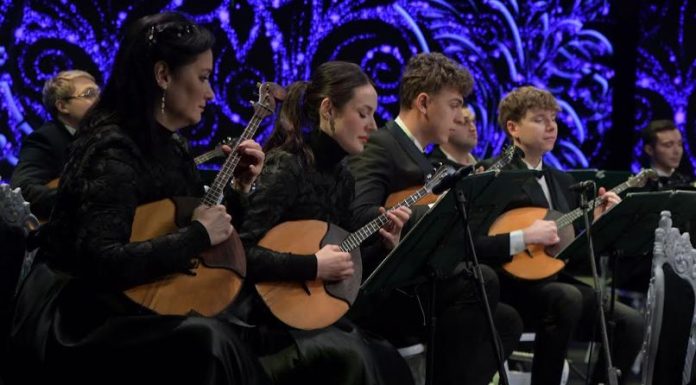Mohammad Salman Iqbal
Others may argue that law is what a statute says or law might be what a regulation says explicitly. A legal positivist might argue that law is a command backed by a sanction. A naturalist may argue that law is divine and it is God’s command given to us through his commandments, but nonetheless, what all these definitions have in common is that they argue that law is a command either of a sovereign, or of God.
The legal realist on the other hand points out that law is not in the commands of the sovereign, rather law is what courts interpret law to be. Justice Wendell gave this definition of law in a realist sense and his argument further goes on to elaborate that law is found in judgments of the court.
The theory of legal realism is further expanded by a famous legal scholar named Karl N Llewellyn. He builds on the approach of Justice Oliver Wendell Holmes and argues that when cases reach the Superior Courts (in our case the Supreme Court of Pakistan), the courts often do not consider strict legal commands such as statutes and precedents.
The court often does give a unique verdict, which may surprise many. Furthermore, Llewellyn points out that judges are human and there are many non-legal considerations at play when judgments are passed. These non-legal considerations include personal biases or political considerations. His quote “Behind decisions stand judges; judges are men; as men they have human backgrounds” beautifully sums up the argument he presents.
What this entails is that the judge’s personality has a huge role in the judgment he passes. Furthermore, a quote by KytheBybe adds more depth to the premise present by Llewellyn by stating “legal realism exposed the role played by politics in judicial decision-making and, in doing so, called into question conventional efforts to anchor judicial power on a fixed, impartial foundation.”
Llewelyn describes the US example of two contradictory approaches, first, that the court must interpret the statute and not exceed it and second, the approach that if a situation requires the judge to go beyond the statute to achieve the desired result of the legislation, he is free to do so, hence, Llewellyn argues that judges can always have various interpretation of the same law.
Lastly, he points that judges are not actually constrained by judicial precedent because they can characterize decisions according to facts to avoid the precedent or set the facts in a way to make the past precedent binding.
Applying, the concept of Legal Realism in the Pakistani Superior Court system, we can observe through various ways that it has a very strong presence. The doctrine is followed by many, and this we can see through the various judgements that have been passed in our judicial history. We can see ignorance for precedence, we can see political biases of judges, as well as at times complete disregard of statutes. The judgments are really reflective of the present political as well as economic order.
Since, the inception of Pakistan, the courts have at various times heard the matter of presidential dissolutions. The Supreme Court heard these cases and employed various tests. The tests were surprisingly different for every case, despite having similar material facts altogether. The test in Haji Saifullah case was that for dissolution of assembly, it must be proven that the machinery of the government had completely broken down, however, in the Tariq Rahim case, the test employed was that the government could be dissolved if there was an “imminent” threat of breakdown of governmental and constitutional machinery.
In the third dissolution case, the court ruled in favor of Nawaz Sharrif and declared the dissolution invalid, by going back to the Haji Saifullah case precedent. In this case, we can see that the judges leading opinion favoured a “narrow interpretation.” In these cases, the court and judges kept on shifting back and forth from a narrow interpretation to a broad interpretation and vice versa of Article 58(–2)(b). For example Justice Shafiur Rehman in the Tariq Raheem case penned down his judgement using a broad interpretation but in the Nawaz Sharrif case, the same judge opined using a narrow interpretation.[1] This maneuvering, we can argue, is not based on legal prepositions;, the same article and it’s interpretation was in question, but the judgement of the cases were totally different.
We can confidently say that other factors did have a role in these judgements. These factors include personal political beliefs, patronage factors as well as the prevailing political situation at hand. This example perfectly illustrates the points that Llewellyn has put forward.
Similarly, from a criminal law perspective, courts have considerable leeway in the interpretation of the statute. It is the courts that derive tests for the statute, and eventually decide if that particular statute applies to the case athand or not. We can also see that a law does not become operational until the courts allow start to interpret it.[AUK1] A famous example is with respect to grave and sudden provocation. Grave and sudden provocation was initially part of Section 300, PPC.
Later on it was declared to be against the provisions of Islam by the Federal Shariat Court in the Gul Hassan case and eventually it was repealed in 1994. However, even after its repeal the court kept on accepting grave and sudden provocation as a valid defense.
The court kept on accepting this defense till 2020, when a bench led by Qazi FaezEsa in Jail Petition No.499 of 2015 outright declared that grave and sudden provocation is not a valid defense and should not be accepted anymore. The court even after the repeal of the statute kept on using these provisions and in PLD 2018 Supreme Court 840, Justice Asif Saeed Khosa decided a case using this doctrine. He contended that the case at hand did not attract the provisions of grave and sudden provocation, but held that it is a valid defense.
This example proves well that law is what the courts implement and actual law is found in judgements only. Once the courts stop interpreting or applying a law only then can it become non-operational, or in the opposite case operational.
Another non-legal factor that influences the superior courts in Pakistan is public opinion and public emotions. We have often seen Chief Justices using their Suo Moto powers in cases where there is huge public sentiment. We have noticed that cases that are being followed by the nation are given more importance such as shorter hearing dates etc.
The argument that realism is dying down is not true and even now the courts have considerable discretion when applying the law. Fixed interpretations and precedents do not constrain the Superior Courts. Moreover, every sanction either by a regulatory authority or a law enforcing agency, is up for challenge in a court. So law is actually what is found in the judgment of the courts and law is what the courts say it is.
[1] Siddique O, “Chapter 1 (V),” The Jurisprudence of Dissolutions: Presidential Powers to Dissolve Assemblies under the Pakistani Constitution and its Discontents
Mohammad Salman Iqbal is a law graduate from LUMS and is currently doing his apprenticeship in a law firm.











